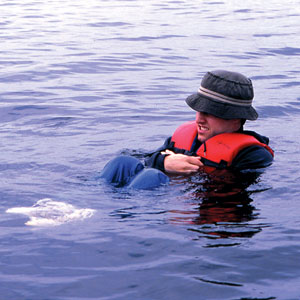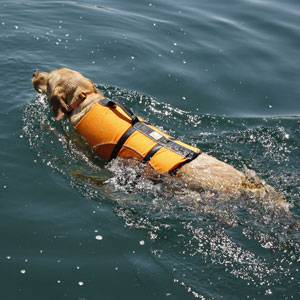 A day of fun out on the water can quickly turn dangerous — even tragic. Hypothermia, the condition when a person’s core temperature reaches 95 degrees Fahrenheit or lower, can set in suddenly and even cause death through heart and respiratory failure.
A day of fun out on the water can quickly turn dangerous — even tragic. Hypothermia, the condition when a person’s core temperature reaches 95 degrees Fahrenheit or lower, can set in suddenly and even cause death through heart and respiratory failure.
Hypothermia can occur from many instances: a boater gets soaked in cold waters when their boat capsizes; an ice fisherman falls through thin ice; or a swimmer spends too much time immersed in cold water. Would you know how to save yourself or someone else from hypothermia’s chilling grasp?
How to Survive Hypothermia When Out On the Water
Quick thinking may save your own or someone else’s life. The first step to surviving hypothermia is to recognize that it’s setting in. According to the Mayo Clinic, the symptoms of mild hypothermia are:
- Dizziness
- Shivering
- Hunger
- Nausea
- Faster breathing
- Trouble speaking
- Slight confusion
- Lack of coordination
- Fatigue
- Increased heart rate
Elderly and extremely young persons are most susceptible to hypothermia. The Mayo Clinic further cautions that those with mild to severe hypothermia may exhibit these symptoms:
- Shivering (or the shivering stops)
- Clumsiness or lack of coordination
- Slurred speech
- Confusion
- Fatigue
- Progressive loss of consciousness
- Weak pulse
- Slow, shallow breathing
Responding to a Crisis
If you’re personally experiencing hypothermia, understand that the condition can lead to poor judgment. Get help immediately, since your body will be focusing on warming itself to its core temperature. You may easily get confused and not be able to help yourself later.
When a crisis occurs, stay calm. Call 911 or your local emergency service for help. If boating out on the ocean and the worst scenario hits, hopefully you’ll have a rescue beacon on board in case calling for help is not an option. Remove wet clothing and cover up yourself or the victim in layers of blankets. (Get indoors as gently as possible since rough movements could trigger heart problems.)
Reducing the Risk of Hypothermia
It’s important to dress warmly around cold water. But, hypothermia can also be brought on by sweat, so wear a layer of moisture-wicking clothing closest to your skin. Don a pair of waterproof boots so sweaty feet don’t cool your body temperature.
When in the water, keeping your head above water (by wearing a life jacket) is one of the best things you can do since cold water on your head quickly lowers your body temperature. It’s why we put a cool rag on the forehead of someone who has a fever. This simple reason is why you should have no excuse to not wearing a life jacket.
Reduce the risk of hypothermia by being cautious on ice-covered water bodies. Check your local weather stations for ice reports or carefully check the ice yourself (in several spots) with an ice chisel and a tape measure. The Minnesota Department of Natural Resources (DNR) recommends the following minimum ice (new, clear and solid) thickness guidelines:
- 4 inches: walking/ice fishing
- 5 inches: snowmobiling
- 8 to 12 inches: driving a car/small pickup truck
- 12 to 15 inches: driving a medium truck
The Minnesota DNR suggests doubling the aforementioned ice thickness guidelines on “snow ice” or white ice. Furthermore, follow a path or trail on the lake if there is one, and avoid the ice in the spring when ice thickness can greatly vary from one spot to another. Watch out for a water body’s open areas.
If boating with an infant or child, you need to be extra cautious of your conditions. If the weather is iffy, don’t do it.
Anticipate hypothermia before it happens. Respond immediately to its symptoms, increasing the victim’s core temperature so that survival is a reality.


